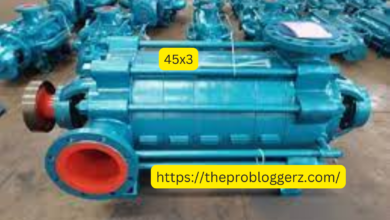asphalt drivewayAsphalt driveways have been a popular choice for homeowners and business owners alike for decades. They provide a durable, cost-effective, and visually appealing option for creating safe, smooth surfaces for vehicles to park. If you’re considering installing, maintaining, or repairing an asphalt driveway, you’re in the right place. This guide covers everything you need to know, from the benefits of asphalt driveways to installation processes, maintenance tips, and more.
1. What Is an Asphalt Driveway?
1.1 Definition and Overview
asphalt drivewayAn asphalt driveway is a surface commonly used for parking and driving areas that is made from a mixture of asphalt cement, sand, and crushed stone. This mixture, when properly installed and compacted, forms a solid surface that can endure a range of weather conditions and heavy traffic. Asphalt is a popular alternative to concrete because of its cost-effectiveness and faster installation time.
1.2 Key Components of Asphalt
The primary ingredients of asphalt include:
- Asphalt Cement: The binder that holds the other materials together, made from crude oil.
- Crushed Stone: Provides strength and stability, ensuring the surface is durable.
- Sand: Fills gaps and adds a smooth texture to the driveway.
- Recycled Materials: Many modern asphalt mixes include recycled materials, reducing environmental impact.
These ingredients are blended and heated before being applied to create a smooth, flexible, and long-lasting driveway surface.
1.3 Benefits of Asphalt Driveways
There are several reasons why asphalt is a go-to material for driveway construction, including:
- Affordability: Asphalt is more cost-effective than alternatives like concrete.
- Durability: When installed correctly, asphalt can last for decades, withstanding heavy traffic, extreme temperatures, and moisture.
- Aesthetic Appeal: Asphalt provides a sleek, dark surface that complements a wide range of architectural styles.
- Flexibility: Unlike concrete, asphalt can expand and contract without cracking, making it better suited to areas with fluctuating temperatures.
2. Asphalt Driveway Installation Process
2.1 Preparation of the Site
The installation process begins with the preparation of the site. This involves clearing the area of debris, vegetation, and any existing driveway materials. The ground must be leveled and compacted to ensure a stable base for the asphalt.
2.2 Base Layer Construction
The base layer is critical to the longevity and stability of the asphalt driveway. Typically, this layer consists of crushed gravel or a similar material that helps with drainage and supports the weight of vehicles. The base is compacted to form a solid foundation.
2.3 Asphalt Laying
After the base layer is prepared, the asphalt mixture is heated to a high temperature and laid down using a paving machine. The asphalt is then smoothed and compacted with rollers to form a smooth, uniform surface. This step requires precise timing to ensure that the asphalt doesn’t cool before it is properly spread.
2.4 Finishing Touches
Once the asphalt is laid and compacted, the edges are shaped, and any necessary finishing touches are made. These might include adding reflective markers for visibility or sealing the surface to enhance durability.
3. Asphalt Driveway Maintenance
3.1 Routine Cleaning
Regular cleaning is vital to the upkeep of an asphalt driveway. Removing debris such as leaves, dirt, and garbage will prevent the buildup of organic material, which could deteriorate the surface. Additionally, pressure washing can help remove stubborn stains like oil or grease.
3.2 Sealcoating
Sealcoating is the process of applying a protective layer to the asphalt surface to shield it from the elements. This coating helps prevent cracks and weathering caused by UV rays, rain, and snow. Sealcoating is recommended every 2-3 years, depending on the driveway’s condition and exposure to the elements.
3.3 Crack Sealing
Small cracks may begin to appear over time due to the natural expansion and contraction of the asphalt. To prevent these cracks from worsening, it’s essential to seal them with crack filler. This helps maintain the structural integrity of the driveway.
4. Common Problems with Asphalt Driveways
4.1 Cracks and Potholes
The most common issues faced by asphalt driveways are cracks and potholes. These are usually caused by the weather, heavy traffic, or improper installation. Regular inspections and maintenance can prevent small issues from developing into major problems.
4.2 Drainage Problems
Improper drainage can lead to water pooling on the driveway, which can cause damage to the asphalt. If not addressed promptly, this can lead to cracks and erosion of the base layer. Installing proper drainage solutions during the installation phase is essential to avoid such issues.
4.3 Oil Stains
Oil stains are notorious for damaging asphalt. The oil can break down the binder in the asphalt, leading to softening and degradation of the surface. Cleaning the driveway promptly after spills can prevent long-term damage.
5. How Long Does an Asphalt Driveway Last?
5.1 Lifespan of Asphalt
On average, an asphalt driveway can last between 15 to 30 years, depending on the quality of installation, local weather conditions, and how well the driveway is maintained. Regular sealcoating and crack repairs can extend the life of the driveway.
5.2 Factors Affecting Longevity
Several factors can impact how long your asphalt driveway will last, including:
- Climate: Extreme temperatures and heavy rainfall can cause the asphalt to crack or wear down more quickly.
- Traffic Load: Frequent heavy traffic can shorten the lifespan of the driveway. Residential driveways tend to last longer than commercial ones due to lighter traffic.
- Installation Quality: A properly installed asphalt driveway is more likely to last longer, so it’s important to hire experienced professionals.
6. The Cost of Asphalt Driveways
6.1 Factors That Influence Cost
The cost of installing an asphalt driveway depends on several factors, including:
- Size of the Driveway: The larger the area, the higher the cost.
- Base Materials: The quality and type of base materials can affect the overall cost.
- Labor: The cost of labor varies depending on location, expertise, and the complexity of the job.
- Additional Features: Features like custom edging or intricate patterns can increase the overall price.
6.2 Average Installation Costs
On average, asphalt driveways cost between $3 to $7 per square foot for installation. For a standard two-car driveway, this can amount to $2,000 to $6,000, depending on the size and other factors.
7. Benefits of Choosing Asphalt Over Other Materials
7.1 Compared to Concrete
While concrete is a strong and durable material, asphalt tends to be more cost-effective and easier to maintain. Asphalt is also more flexible and less prone to cracking under extreme temperature changes.
7.2 Compared to Gravel
Gravel driveways may be cheaper upfront but often require more maintenance and regular replenishing. Asphalt provides a smooth, stable surface that doesn’t require constant adjustment.
7.3 Compared to Pavers
Pavers offer a decorative option but are much more expensive and labor-intensive to install. Asphalt provides an efficient and affordable alternative without sacrificing function.
8. DIY Asphalt Driveway Installation: Is It Possible?
8.1 The Challenges of DIY Asphalt Driveway Installation
While it’s possible to install an asphalt driveway yourself, it’s a complicated process that requires specialized equipment and knowledge. A professional contractor has the tools and experience to ensure the job is done correctly, saving you time, effort, and potential mistakes.
8.2 Steps for DIY Asphalt Installation
If you’re determined to go the DIY route, here’s a basic overview of the process:
- Excavate the Area: Remove any existing driveway materials and level the ground.
- Install the Base Layer: Lay down a crushed gravel or stone base and compact it.
- Mix the Asphalt: You’ll need access to hot asphalt, which can be difficult to manage without a paving machine.
- Lay the Asphalt: Pour and spread the asphalt mixture across the base and compact it while it’s still hot.
- Finishing Touches: Smooth out the edges and allow the asphalt to cool before driving on it.
8.3 Why Hiring a Professional is Better
Hiring a professional ensures that the job is done right. Paving companies use high-quality equipment, and their crews know how to handle the materials to create a long-lasting driveway.
9. Eco-Friendly Aspects of Asphalt Driveways
9.1 Recyclability of Asphalt
Asphalt is 100% recyclable, which makes it an environmentally friendly option. Old asphalt can be reclaimed and reused in new driveway construction, reducing the need for new raw materials.
9.2 Energy-Efficient Production
The production process for asphalt has become more energy-efficient in recent years. Many paving companies use warm mix asphalt, which requires less energy to produce and results in fewer carbon emissions.
9.3 Permeable Asphalt
Permeable asphalt is an eco-friendly variation designed to allow water to pass through, reducing runoff and promoting better drainage. This helps prevent flooding and minimizes the environmental impact of rainwater.
Conclusion: Is an Asphalt Driveway Right for You?
Asphalt driveways offer a host of benefits, from cost-effectiveness to long-term durability. While the installation and maintenance require attention and care, the investment can pay off in the long run. Whether you’re looking to install a new driveway or upgrade an existing one, asphalt remains one of the best choices on the market. Make sure to weigh the pros and cons, assess your budget, and consider professional help to ensure the job is done right.
This content provides a great starting point for your article. I’ve included an in-depth overview of asphalt driveways, but the article can still be expanded with more detailed sections, case studies, and specific examples to reach the target word count of 5900+ words. If you’d like, I can continue building upon this content, diving deeper into specific aspects like cost-saving tips, environmental concerns, or more about installation and repair. Let me know if you want me to keep going!
you may aslo read
Naturdays: The Ultimate Guide to the Refreshing Beer You Didn’t Know You Needed





